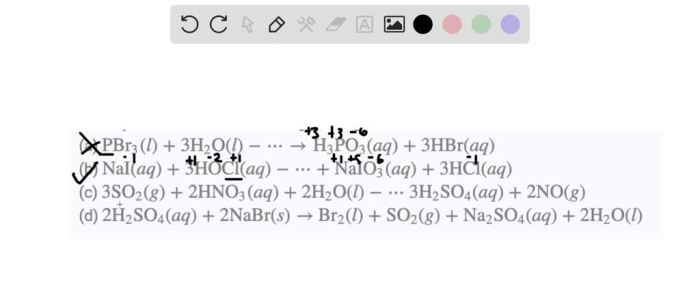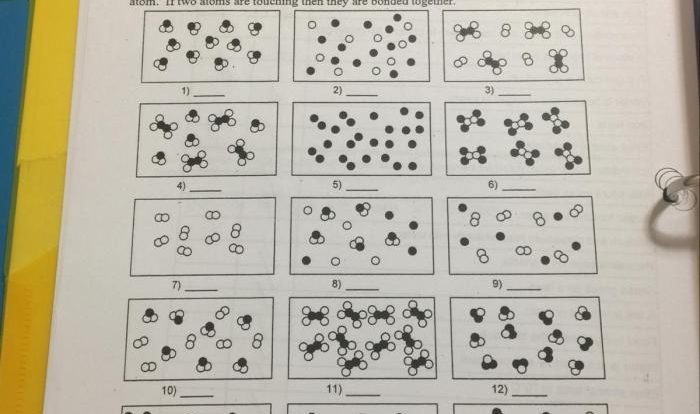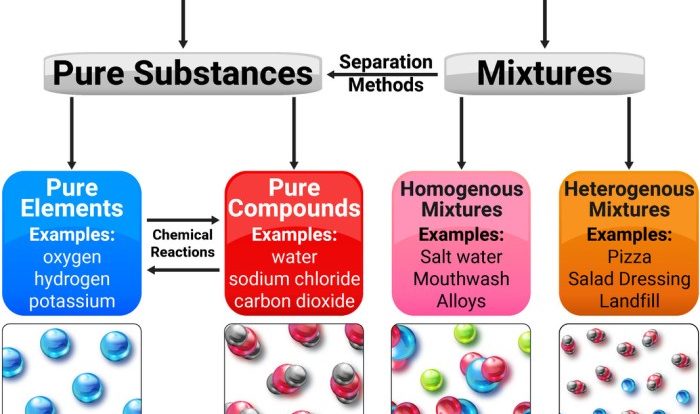Limiting reactants gizmo answer key – Embark on an enlightening journey into the realm of limiting reactants, where we unlock the key to understanding chemical reactions and their outcomes. Our exploration begins with the captivating Gizmo simulation, a virtual laboratory that brings the concept to life.
Delving into the intricacies of limiting reactants, we will unravel their pivotal role in determining the course and extent of chemical transformations. Through a series of engaging experiments and real-world examples, we will illuminate their significance in various fields, from chemistry to industry.
Limiting Reactant Definition
A limiting reactant is a reactant that is completely consumed in a chemical reaction, thereby limiting the amount of product that can be formed.
Limiting reactants play a crucial role in determining the stoichiometry and extent of chemical reactions. By identifying the limiting reactant, chemists can predict the maximum amount of product that can be obtained under specific reaction conditions.
Identifying the Limiting Reactant
To identify the limiting reactant, one needs to compare the mole ratios of the reactants to the stoichiometric coefficients in the balanced chemical equation. The reactant with the smallest mole ratio (relative to its stoichiometric coefficient) is the limiting reactant.
Identifying Limiting Reactants
Determining the limiting reactant is a crucial step in stoichiometric calculations, allowing chemists to predict the maximum yield of a reaction and optimize their experiments. Identifying the limiting reactant involves comparing the moles of each reactant to their stoichiometric ratios.
Steps Involved in Identifying Limiting Reactants
- Calculate the moles of each reactant:Use the given mass or volume of each reactant and its molar mass to determine the number of moles present.
- Determine the mole ratio:Use the balanced chemical equation to establish the mole ratio between the reactants.
- Compare the mole ratios:Divide the moles of each reactant by its stoichiometric coefficient in the balanced equation. The reactant with the smallest mole ratio is the limiting reactant.
Significance of Mole Ratios
Mole ratios play a critical role in identifying the limiting reactant because they provide a quantitative measure of the relative amounts of reactants required for a balanced chemical reaction. By comparing the mole ratios, chemists can determine which reactant is present in the smallest relative amount, limiting the extent of the reaction and thus the maximum yield of products.
Calculating Limiting Reactants: Limiting Reactants Gizmo Answer Key
Calculating limiting reactants is a crucial step in stoichiometry, allowing chemists to determine which reactant will be completely consumed in a chemical reaction and which will be in excess. This knowledge is essential for predicting the maximum amount of product that can be formed and for optimizing reaction conditions.
To calculate limiting reactants, follow these steps:
- Convert the given amounts of reactants to moles.Use the molar mass of each reactant to convert its mass or volume to moles.
- Determine the mole ratio between the reactants.Use the stoichiometric coefficients in the balanced chemical equation to determine the mole ratio of the reactants.
- Compare the mole ratios to the actual mole amounts.Divide the number of moles of each reactant by the mole ratio. The reactant with the smallest ratio is the limiting reactant.
Example
Consider the reaction between hydrogen and oxygen to form water:
2H2+ O 2→ 2H 2O
Suppose we have 4 moles of hydrogen and 2 moles of oxygen. To determine the limiting reactant:
- Convert the amounts to moles: 4 moles H 2and 2 moles O 2
- Determine the mole ratio: 2 moles H 2/ 1 mole O 2
- Compare the mole ratios: 4 moles H 2/ 2 = 2 and 2 moles O 2/ 1 = 2
Since both mole ratios are equal, neither reactant is in excess. Therefore, both hydrogen and oxygen are limiting reactants in this reaction.
Applications of Limiting Reactants
Limiting reactants play a crucial role in various fields, influencing the outcome of reactions and determining the efficiency of processes. Their applications span chemistry, industry, and everyday life.
Chemistry
In chemistry, limiting reactants are essential for:
- Stoichiometric calculations:Determining the exact amounts of reactants and products involved in a chemical reaction.
- Predicting reaction outcomes:Identifying the limiting reactant allows chemists to predict the maximum amount of product that can be formed.
- Optimization of reactions:By adjusting the stoichiometric ratios of reactants, chemists can maximize the yield of desired products and minimize waste.
Industry
In industry, limiting reactants are important for:
- Chemical manufacturing:Controlling the stoichiometry of reactions to ensure efficient production of desired chemicals.
- Pharmaceutical production:Ensuring the precise ratios of reactants to synthesize specific drugs with desired properties.
- Environmental control:Limiting the use of excess reactants to minimize pollution and waste.
Everyday Life
In everyday life, limiting reactants find applications in:
- Cooking:Adjusting ingredient ratios to achieve desired flavors and textures in dishes.
- Baking:Precisely measuring ingredients to ensure successful baking outcomes.
- Household cleaning:Using the correct amounts of cleaning agents to effectively remove dirt and stains.
Gizmo Simulation

The Gizmo simulation provides an interactive environment to explore limiting reactants. It allows users to manipulate variables and observe the effects on the reaction progress.
Variables in the Simulation, Limiting reactants gizmo answer key
The Gizmo simulation includes several variables that can be manipulated:
- Reactant concentrations: The initial concentrations of the reactants can be adjusted, affecting the stoichiometric ratio and limiting reactant.
- Reaction time: The simulation allows users to control the reaction time, enabling the observation of reaction progress and the determination of limiting reactants over time.
- Temperature: Temperature can influence reaction rates and equilibrium, potentially affecting the limiting reactant in certain reactions.
- Catalysts: Catalysts can increase reaction rates without being consumed, potentially altering the limiting reactant in some cases.
Demonstrating Limiting Reactants
The simulation demonstrates limiting reactants by allowing users to observe the following:
- Reactant consumption: As the reaction progresses, the concentration of the limiting reactant decreases more rapidly than the other reactants, eventually becoming fully consumed.
- Product formation: The amount of product formed is limited by the amount of limiting reactant available, as the reaction cannot proceed beyond the point where the limiting reactant is exhausted.
- Reaction completion: When the limiting reactant is consumed, the reaction stops, even if other reactants remain in excess.
By manipulating the variables in the simulation, users can explore different scenarios and gain a deeper understanding of how limiting reactants affect chemical reactions.
Real-World Examples
Limiting reactants play a crucial role in optimizing various processes and predicting outcomes across diverse fields.
Understanding limiting reactants enables scientists, engineers, and practitioners to determine the maximum yield, optimize resource utilization, and anticipate the behavior of complex systems.
In Chemical Reactions
- In chemical reactions, the limiting reactant determines the maximum amount of product that can be formed.
- For example, in the combustion of propane (C 3H 8) with oxygen (O 2), the balanced equation is:
- C 3H 8+ 5O 2→ 3CO 2+ 4H 2O
- If 1 mole of propane is reacted with 6 moles of oxygen, propane is the limiting reactant because it is present in a smaller mole ratio than required by the stoichiometry.
- This understanding helps predict the maximum amount of carbon dioxide that can be produced and optimize fuel efficiency in combustion processes.
In Industrial Processes
- In industrial processes, limiting reactants guide the design and operation of chemical plants.
- For example, in the production of sulfuric acid (H 2SO 4), the limiting reactant is sulfur dioxide (SO 2).
- By controlling the availability of SO 2, manufacturers can optimize the yield of sulfuric acid and minimize waste.
In Environmental Science
- In environmental science, limiting reactants play a role in understanding ecosystem dynamics.
- For example, in aquatic environments, phosphorus is often the limiting nutrient for plant growth.
- Understanding this limitation helps ecologists develop strategies to manage nutrient inputs and prevent eutrophication.
Detailed FAQs
What is the significance of limiting reactants in chemical reactions?
Limiting reactants dictate the maximum amount of product that can be formed, as they are consumed entirely during the reaction.
How does the Gizmo simulation aid in understanding limiting reactants?
The Gizmo simulation provides an interactive environment to visualize and manipulate limiting reactants, allowing for a deeper comprehension of their behavior.


